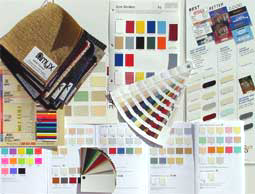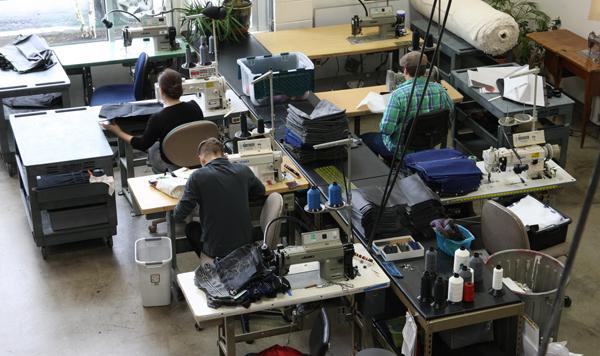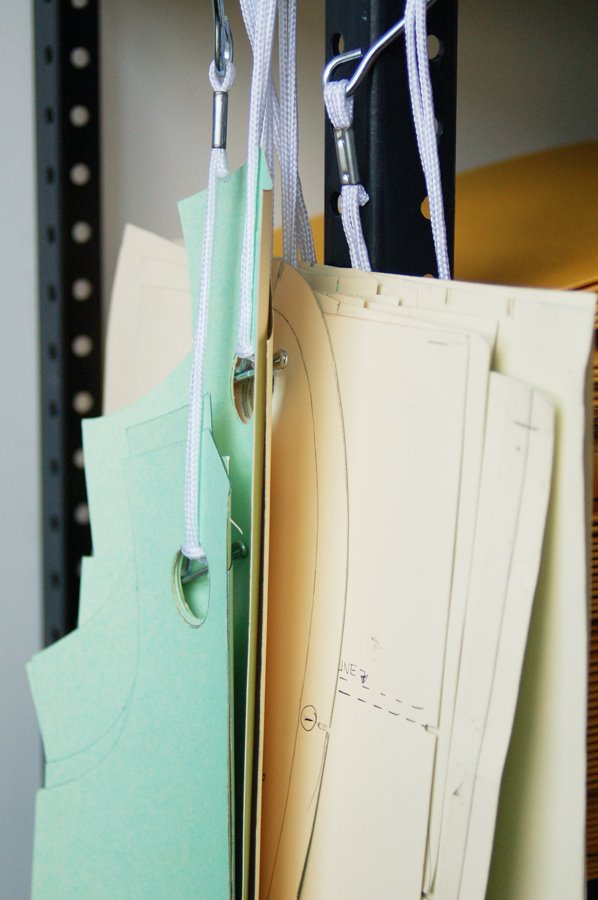Sourcing Fabric for Production
Quantifying Small Run Production
June 14, 2012Key Terms To Know When Sourcing Fabric
February 13, 2013When it comes to sourcing fabric for production, there are a number of important things to consider.
First steps:
During the initial design concept phase, identify what you are looking for (colors, fiber content, performance needs, intended use, etc.). Material sourcing should take place before moving into the patterning and prototyping phase. Don’t set yourself up for a futile search for the perfect fabric you envision; explore fabric options first and realize that as a startup sourcing small quantities, your selection will likely be limited.
Before you begin contacting fabric suppliers, you should have an official business entity with a resale tax ID number that allows you to set up and order through wholesale accounts. Try to avoid buying at retail (many websites that claim wholesale prices to the public are still retailers or jobbers); this can cripple your margins and most of the time you cannot reorder fabrics down the road. At the very least, request a tax exemption on retail purchases.
Minimums:
The minimums required by many large textile and trim suppliers are often higher than what an emerging designer can produce by several hundred yards. Fortunately, the industry is changing and there are a number of companies who now cater to independent designers and offer minimums anywhere from one yard to 1 roll; some also offer sample yardage. Custom dyed fabric typically requires 300-500 yards per dye lot, custom prints may be 500-1000+ yards, and completely custom fabric can be 2000+ yards. There are some digital and other smaller volume printing and dyeing options, but expect to pay a premium whenever you are dealing in low volumes.
Timelines and Continuity:
If your business operates on a traditional seasonal development and production model, you could be sourcing materials a year or more before the finished product is for sale at retail. When you consider that samples are presented to wholesale buyers 6 months before the retail selling season, you have to source sample yardage several months before that to make patterns and samples, then you have to order production yardage to fill orders after several months have passed. This is why it’s important to consider continuity, which is the ability to order and reorder the same fabric. Look for suppliers who have “in stock” selections.
Identifying and Contacting Suppliers:
When contacting fabric suppliers, be professional and prepared. Remember that you are trying to establish business to business relationships. Many wholesale suppliers will try to weed out amateurs, as they do not sell to the general public. Represent yourself as a manufacturer of a specific niche product, rather than identify yourself as a designer or startup; suppliers will be more likely to take you seriously.
Attending a fabric trade show can be a great way to identify potential suppliers and examine their offerings firsthand. While more companies are beginning to establish a web presence, it is often best to contact suppliers directly, as they typically have a far more extensive selection available than what is represented on their website. The DG Expo is a great show for startups, as it showcases many low minimum suppliers.
Be prepared to answer these questions:
- What is your desired fabric? (fiber content, weave, finish, etc.)
- What colors, prints, or designs do you want?
- What weight are you are looking for?
- Is there a specific width you need?
- What will the end use be?
- When do you need the fabric?
- How much do you need?
- Where will you need it shipped?
- How much do you want to pay for it?
- Is continuity (ability to reorder months or years down the road) important to your collection?
Swatches and Samples:
Request swatches if possible to narrow down the selection process before committing to sample yardage (typically 3-10 yards), and hold off on committing to production quantity yardage until after you have a chance to evaluate and test samples. You must allow plenty of time for this process. It is important to choose several more fabrics than you will eventually need, with the intention of narrowing down your options.
Try to limit your collection to 2-5 fabrics in a limited color palette that can be used across several styles; this will make it easier to meet minimums and save you time on testing. It also adds continuity and coordination to a line, allowing for a more cohesive look when merchandising the collection. Solids tend to sell better than prints, so be conservative with the number of prints you choose. Also consider colors in terms of saleability; it is important that your collection merchandises well and is straightforward for buyers. Simplifying your fabric selections will save money and streamline this entire process.
Sticking to one product category will also simplify the sourcing process. Consistency in material types will reduce the amount of time spend calibrating machine tensions in production, and fewer color choices will reduce the need to switch out thread. You may also want to consider labels – can you use the same care/content labels across several styles or will you need different ones printed for each style and fabric?
Testing:
Wash and dry clean; check for shrinkage, colorfastness, ease of handling, etc. You are much better off if you can identify any problems early on and eliminate a fabric, rather than going into production on something that generates issues and produces a high volume of returns, which could severely damage your company’s reputation.
Where to start:
The first recommendation I make to any designer who is just starting out is to contact Chicago Wholesale Fabrics. This showroom specializes in helping small manufacturers source from lines with low minimums. Jay Arbetman and Diana Muzzy have extensive industry experience, and they currently represent over 20 different mills & converters with fabrics, linings, trims, zippers, buttons, labels, and more. You can trust their expertise to guide you through the process.






1 Comment
[…] Related: COsewn’s Guide to Sourcing Fabric for Production […]